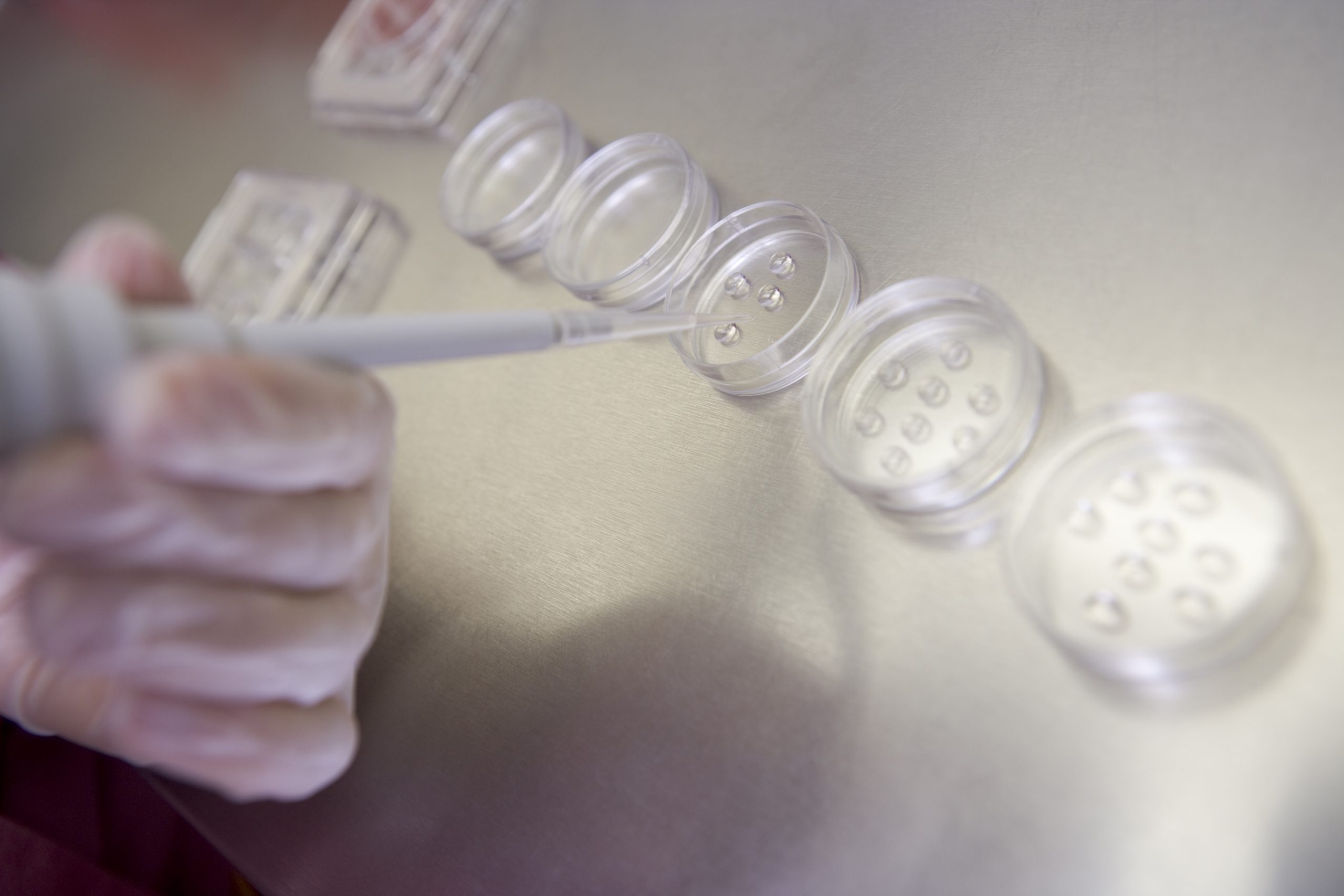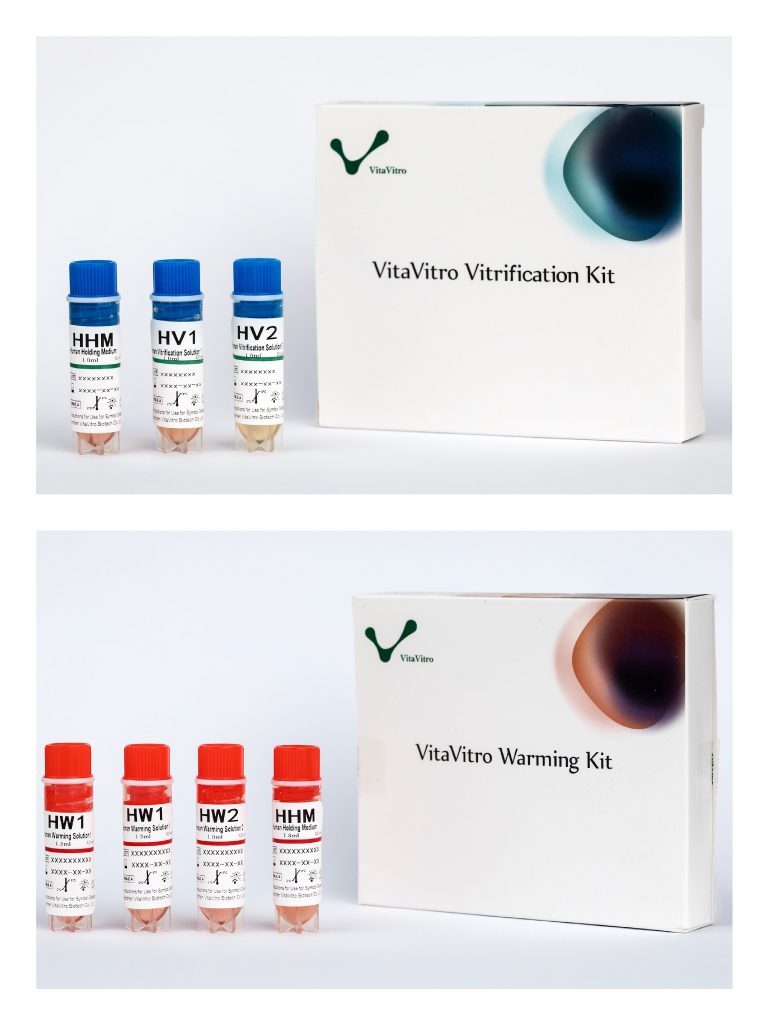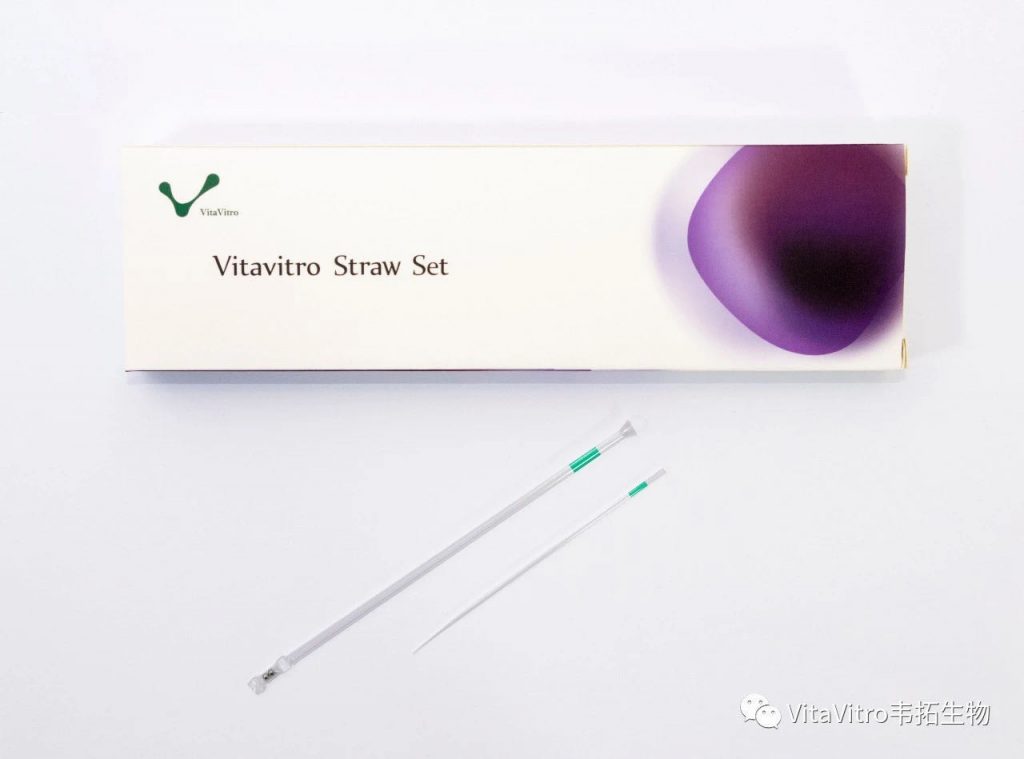3. Macromolecules are not essential parts of solutions used for cryopreservation, but they use is highly advisable. Their effect is difficult to specify – in general, they protect samples and improve survival and subsequent developmental rates. Part of this effect may be the contribution in the osmotic pressure, that allows the use of lower concentrations of non-permeable and permeable cryoprotectants (see below). Another part the increased viscosity of the solution that may mitigate the mechanical stress during the process. Macromolecules prevent attachment of oocytes and embryos to plastic and glass surfaces, and may also protect the cell membrane by simple coverage or specific bounding.
A fifty-years-old endeavour in embryology is to use chemically defined components in media for all processes, to increase consistency and to decrease the danger of contamination. Up till today, despite repeated attempts, most of these efforts failed. Among others, promising successes were described with polyethylene glycol (PEG), polyvinyl pyrrolidone (PVP), and Ficoll. However, independent comparative studies found these materials less efficient than proteins.
Recently, hydroxypropyl -methylcellulose (HPMC)was introduced and applied in commercial media. This material is produced with rather drastic chemical modification of cellulose. It is used both for medical purposes (including topical eye treatments and surface coating of drugs) and as a gluten replacement of gluten-free bread. It is not absorbed through the digestive tract; accordingly, it is regarded non-toxic by authorities.
However, it may induce allergic reaction at eye treatment, and can also create gastrointestinal complaints, precisely the same that gluten-sensitive people expect to eliminate. According to 1. the relatively high concentration in the vitrification medium; 2. the paralysed protection mechanisms of vitrified samples especially after warming; and 3. the lack of any barrier (like the intestinal wall) to protect oocytes and embryos in vitro, the use of HPMC – despite a few supportive papers – may require certain caution.
The most common macromolecules applied in human IVF media are proteins derived from human serum or plasma. Various products are available, including the most common human serum albumin (HSA), serum substitute supplement (SSS) with globulin and lipoprotein as extra components; and similar additives from various producers worldwide. Earlier, human serum was also part of the list, but it was removed soon because of frequent toxicity and potential contamination issues. In many countries of the world, governmental regulations restrict the use of some of these additives in reproduction. Fortunately, in contrast to bovine, in humans, the usually unrestricted HSA is entirely appropriate for vitrification purposes.
4. Antifreeze proteins are hard to categorise. Per definitionem they are both macromolecules and cryoprotectants. They are products of organisms living in a harsh environment, requiring survival of subzero temperatures for longer – usually inactive – periods. To a certain level, these proteins can prevent ice crystal formation. In a lucky case, a few degree difference in freezing point is enough to ensure survival.
To relieve us from the task of categorisation, I have to tell you that it may not be needed – as these proteins may not be needed, either. During the past 30 years, the application of these antifreeze proteins repeatedly surfaced and disappeared again after a few publications. Maybe they will have some limited role in the future cryopreservation protocols in some vertebrates, but very unlikely in our (sorry – your) life and our species.
5. Cryoprotectants are the most important, (almost) completely indispensable components of vitrification media. The “almost” was needed, as for male gametes, the extremely compact structure and low water content may provide some chance for cryoprotectant-free vitrification.
However, for the large compact oocytes and all embryos from zygotes to hatched blastocysts, cryoprotectants are absolutely required.
These chemicals can be either permeable or non-permeable ones. It is not just an “academic” (i.e. stupid) sophistry; it means a different – although slightly overlapping – task.
The role of non-permeable cryoprotectants is to press out the water from the cell before cooling, by using step-wisely increased slow compression procedure, and to protect the vitrified-warmed cells from the explosion when the permeable cryoprotectants from the solution. They practically have no more function, just to compress and keep compressed – the only additional requirement is not to be toxic. From this point of view, sucrose, our simplest sugar that we drink with coffee, tea and non-diet Coke.

(one of the bright moments of my – otherwise extremely boring - life was a call from a remote country. A visiting embryologist friend of mine had everything, oocyte in LN2, doctor in the theatre, patient shaved, but the sucrose did not arrive from the distributor. My only question was - is there a coffee shop downstairs? Then go down, pick up some sugar cubes, measure, dissolve, add, filter… in a month, I got the news – pregnant).
A great story for this blog, of course, it is not true!!! (or – is it?)
So, just common sucrose, nothing else. A more snobbish version is the trehalose, another sugar, with zero additional benefits, just the price is significantly higher. Anyway, some people prefer an Aston Martin. I drive a 20 years old Toyota Cruiser.
Let’s remain at the subject; the other group of cryoprotectants is also connected to cars. Organic solvents are excellent as cryoprotective agents – including the legendary glycerol. But others, including the conventional ethanol – were also used successfully for the purpose.
(Some laboratories - including worldwide renowned ones - are paranoid about the use of ethanol spray for surface decontamination. They probably do not know that embryos may tolerate as high as 10% alcohol for minutes; it may even stimulate their development. Not a single human - not even an Australian- would survive a tenth of this concentration in blood)
But – speaking about cars – ethylene glycol (EG), the less toxic, most efficient and reliable cryoprotectant for vitrification is also the most important component of car coolants. The mechanism is the same, prevent ice formation. We were just lucky. The solution was in our garage.
Unfortunately, to use EG alone is not the best strategy. All permeable cryoprotectants have some toxic effect, but this effect differs between cryoprotectants. If we use two, the specific toxicity is halved, and the cryoprotective effect remains the same or even improves.
Yes, but what should be the second permeable cryoprotectant? Here the debate between labs and producers is bitter, fight till the first blood or even further. There are several candidates, but the two most powerful competitors are propylene glycol and dimethyl sulphoxide (DMSO).
In fact, DMSO is just unlucky. It is an excellent cryoprotectant, and also an excellent solvent, with less toxic effect than any of its competitors. But – as a great solvent, it was used to dissolve suspected carcinogenic agents, for animal experiments. It worked well – but it was too good, decreased the carcinogenic effect of the tested-dissolved material. So they stopped to use it.
Now, many scientists have heard only part of the story and connected DMSO to carcinogenesis. Very similar to the man who was “involved in a robbery case”. Yes, he was involved. He has been robbed…
Anyway, still many groups and producers trust DMSO and resist the ads of some producers advertising the alternative (propylene glycol) as “non-toxic” – in fact with an order of magnitude more toxic than DMSO, and even more importantly – less efficient.
When I was bovine embryologist in Denmark, I had the rare privilege to work with (literally) tens of thousands of oocytes and embryos. I used this opportunity to test many possible combinations of these cryoprotectants, 25-75%, 33-67%, forth and back, etc.) At the end of the day, the optimal proportion of EG and DMSO in both the diluted and concentrated solution was 50-50%.
So, we have the team.
Hepes-buffered TCM
Human serum albumin
Sucrose
DMSO
Ethylene glycol
and, of course, the OPS.


Let the games begin!
(to be continued)


